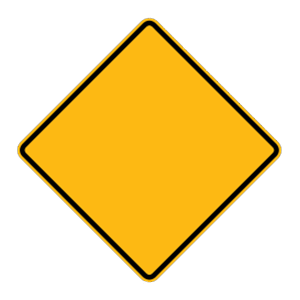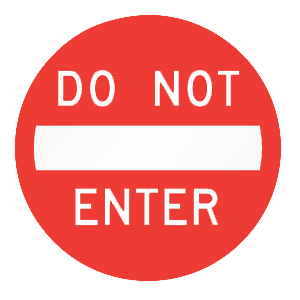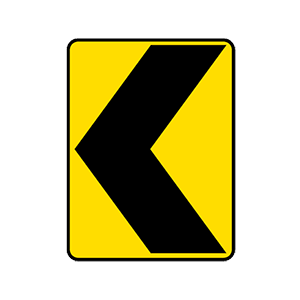2025 Louisiana Permit Test 15
The following questions are from real DMV written tests. These are some of the actual permit questions you will face in Louisiana. Each permit practice test question has three answer choices. Select one answer for each question and select "grade this section." You can find this button at the bottom of the drivers license quiz. For a complete list of questions and answers for Louisiana please visit https://cheat-sheets.dmv-written-test.com/en/louisiana/car.
Number of Tests
Number of Question
Passing Score
9. A yellow and black diamond-shaped sign:

Explanation
Warning signs, which tell you about conditions on or near the road ahead, are usually diamond-shaped with black symbols or words on a yellow background.
10. Allowing a space cushion between your vehicle and its surroundings is important because it:
Explanation
The only way to be sure you will have enough time to react to mistakes made by other drivers is to leave plenty of space between you and the vehicles around you.
11. This sign is used to prevent:

Explanation
This sign warns that a road has one-way traffic and you must not enter from your current direction.
12. To turn left from multilane, one-way streets and highways, you should start from:
Explanation
To turn left from multilane streets and highways, start from the left lane.
13. The act of turning your head and checking your blind spot before changing lanes, driving away from a curb, or merging your vehicle into traffic is:
Explanation
When changing lanes, it is important to check your blind spots. Do this by looking over your shoulder toward the next lane. Do not rely only on your mirrors.
14. You are waiting in the intersection to complete a left turn. You should:
Explanation
You must always signal before turning or changing lanes. You should keep your wheels straight while waiting to make a left turn. If another vehicle hits you from behind, this ensures that you will not be pushed into oncoming traffic.
15. When you see this sign, it means:

Explanation
Chevron signs like this indicate that the road curves sharply in the direction indicated by the chevron (in this case, to the left). There may be several chevron signs placed throughout a curve.
16. If you reach an intersection where you wish to turn but you are not in the proper lane, you should:
Explanation
Never make last-minute turns. If you reach an intersection where you wish to turn but you are not in the proper lane to make the turn, drive to the next intersection and then make the turn from the proper lane.
Ranked by best match
